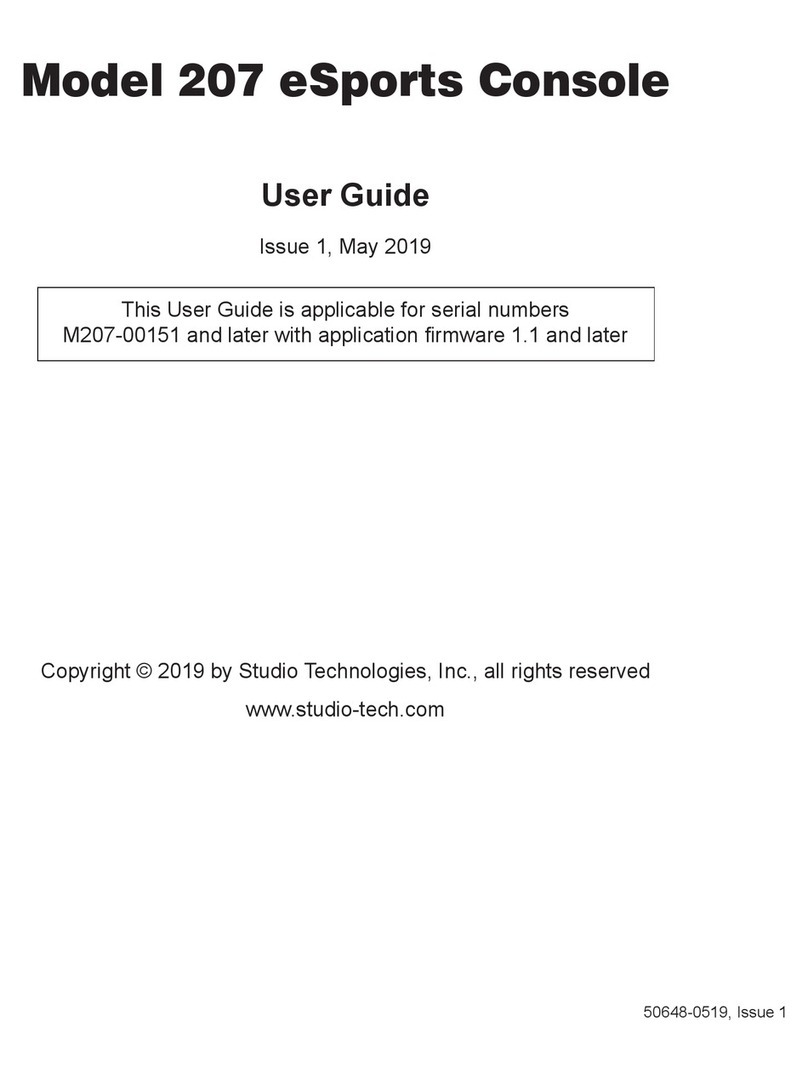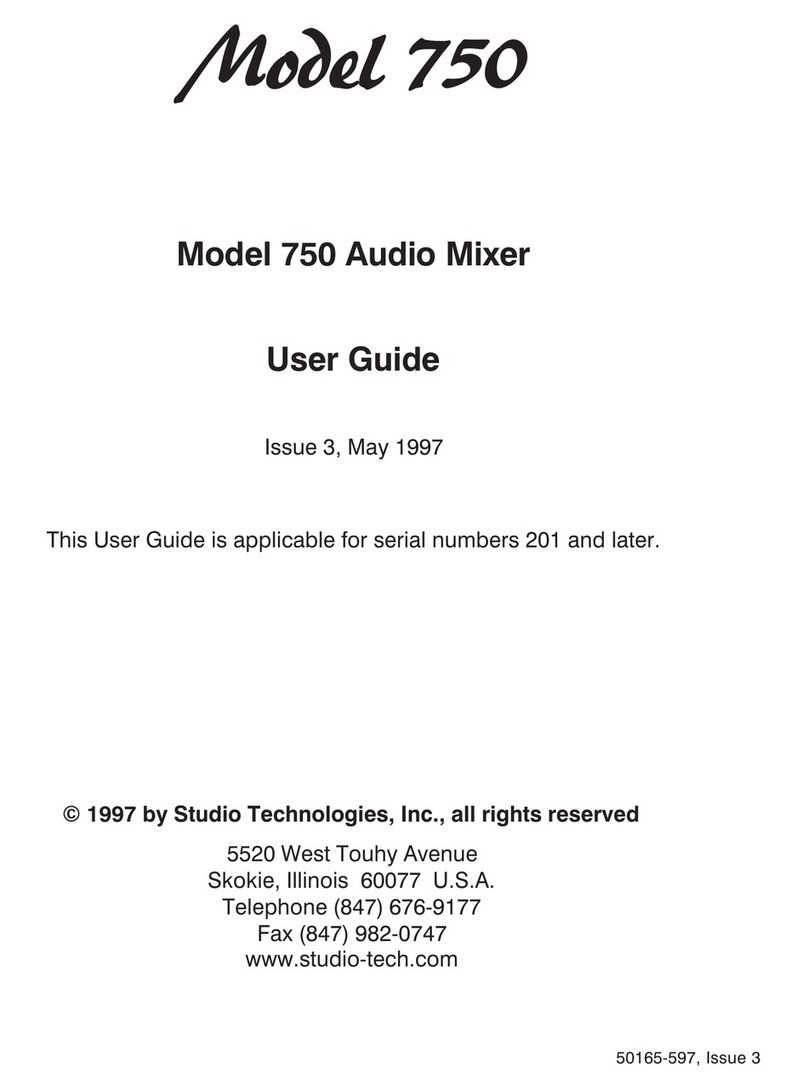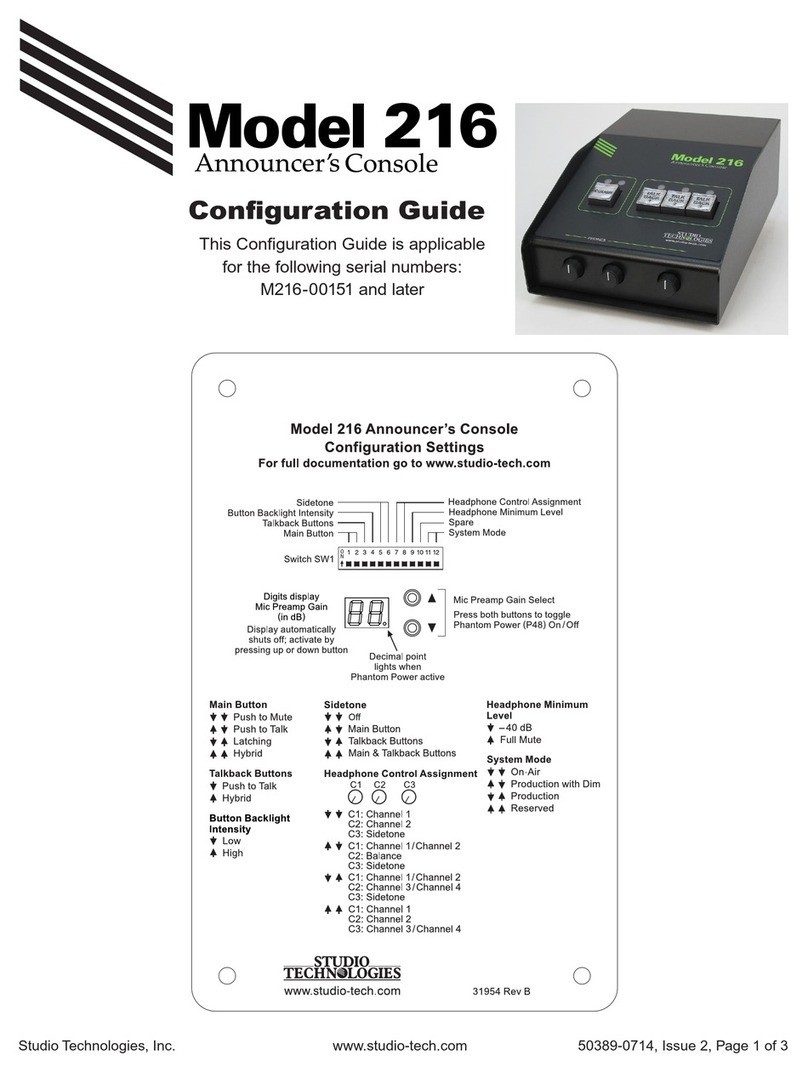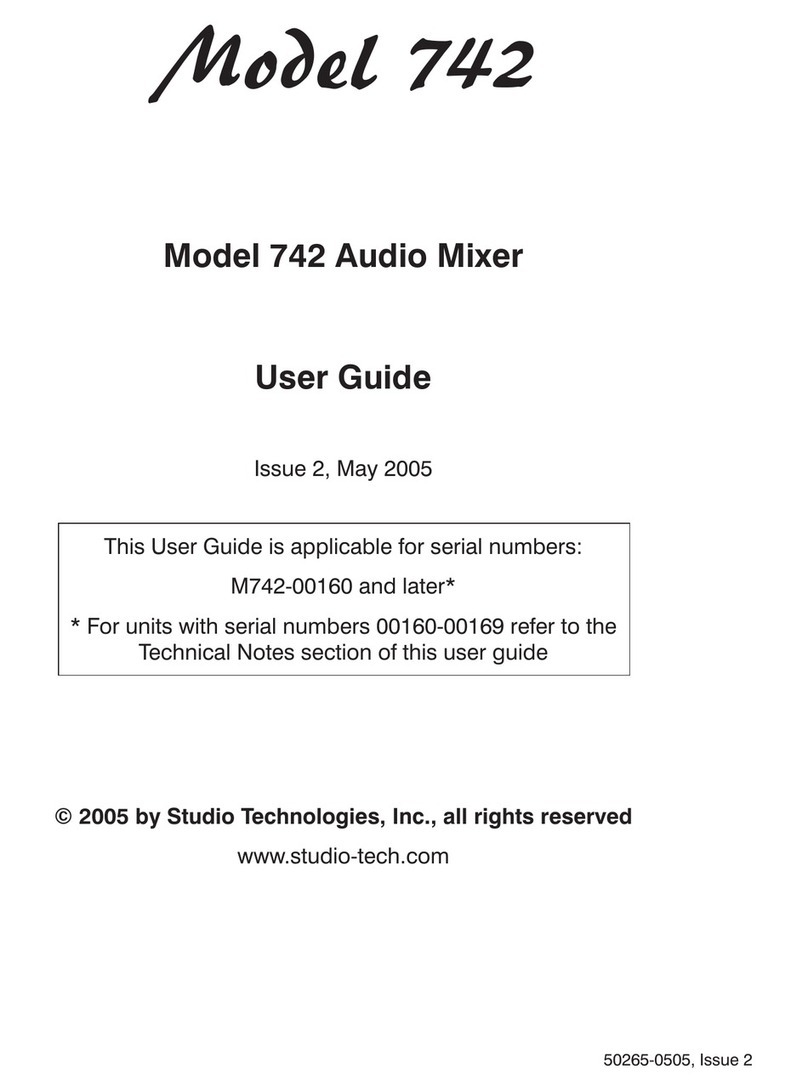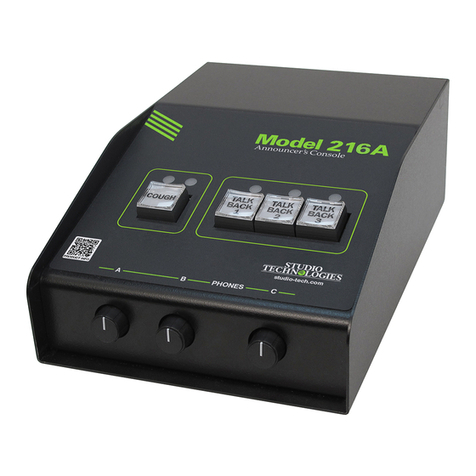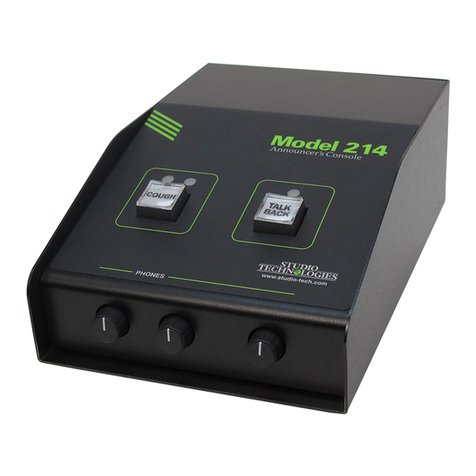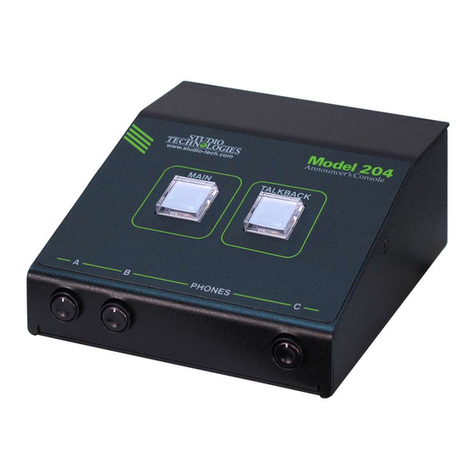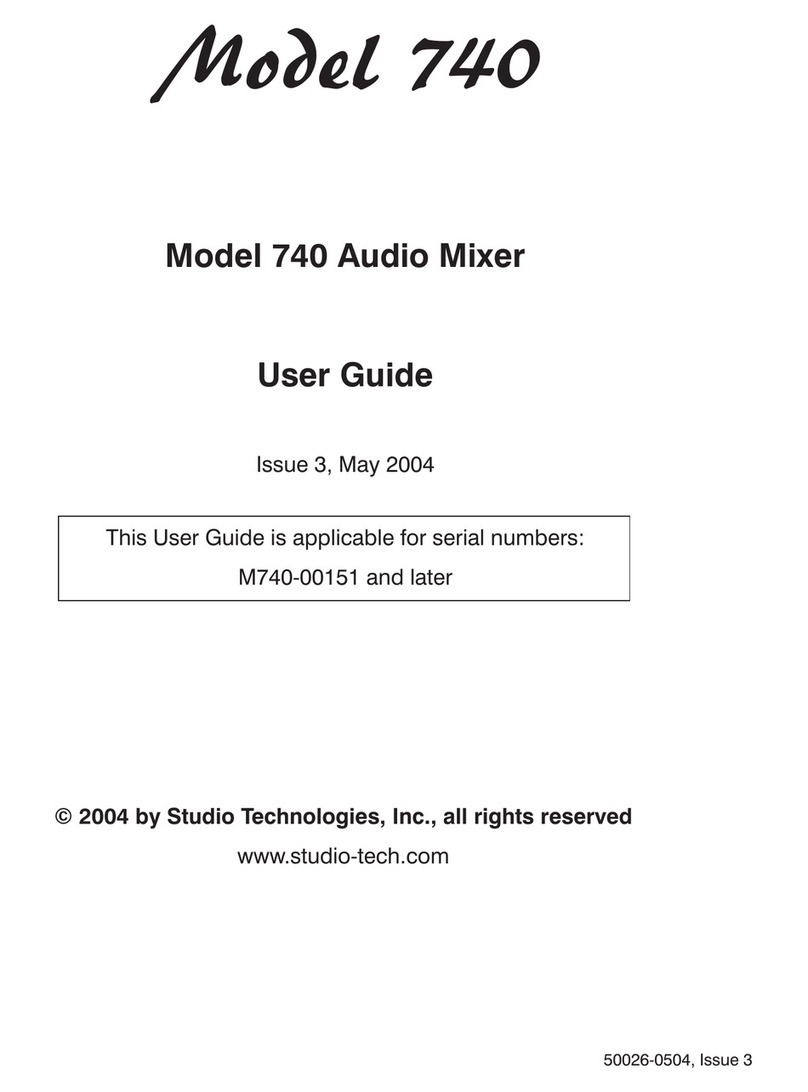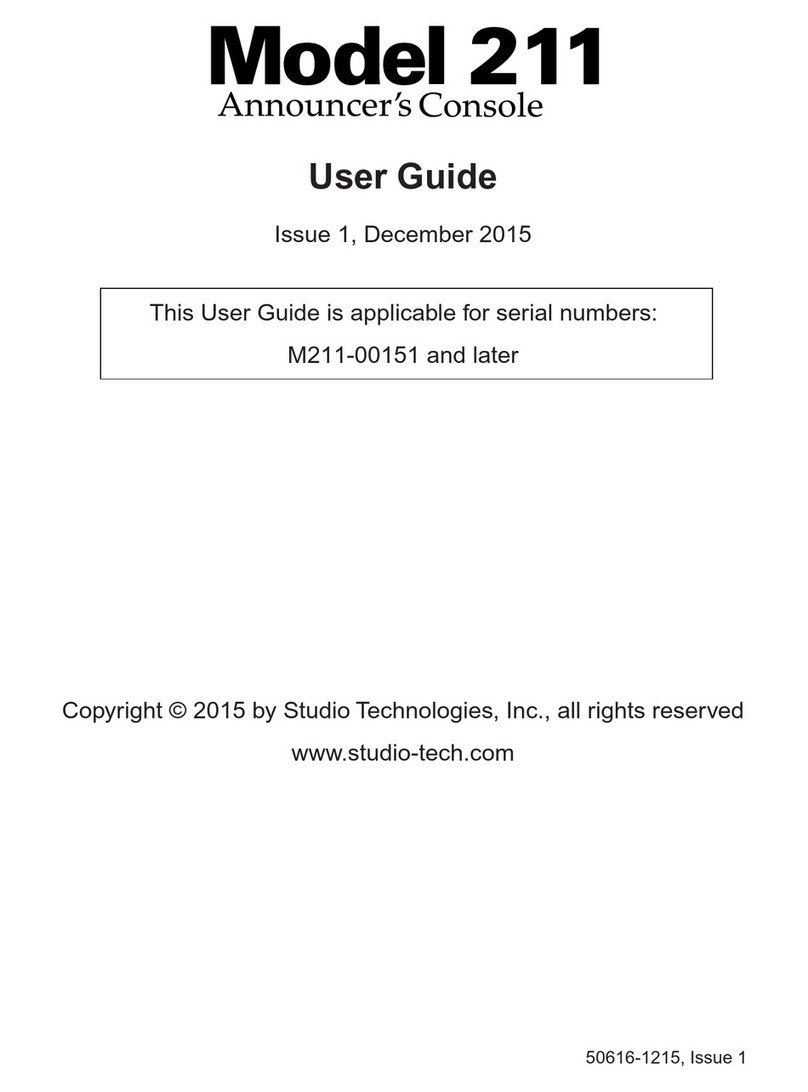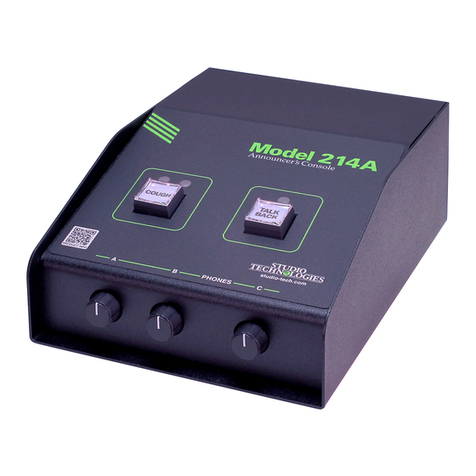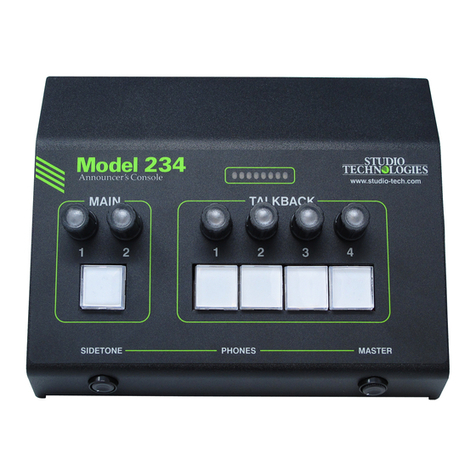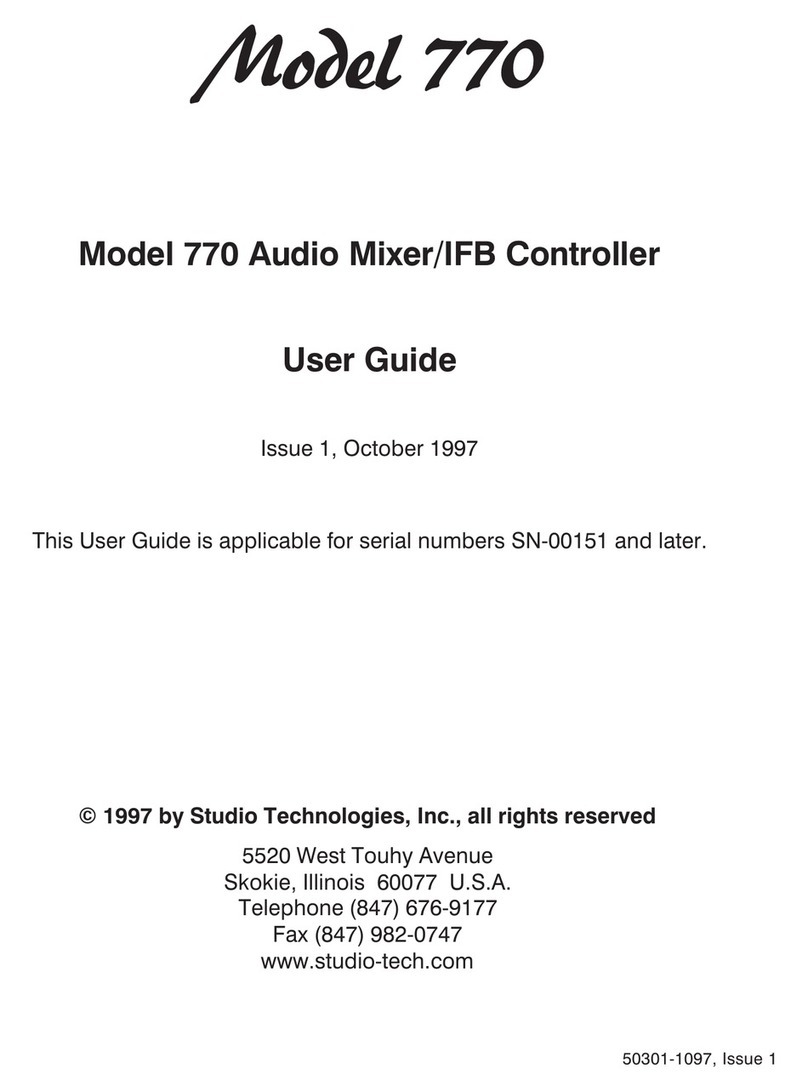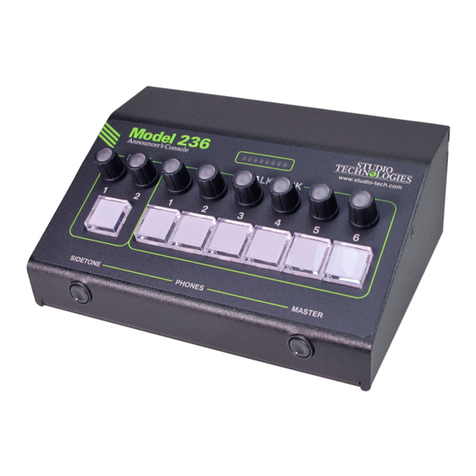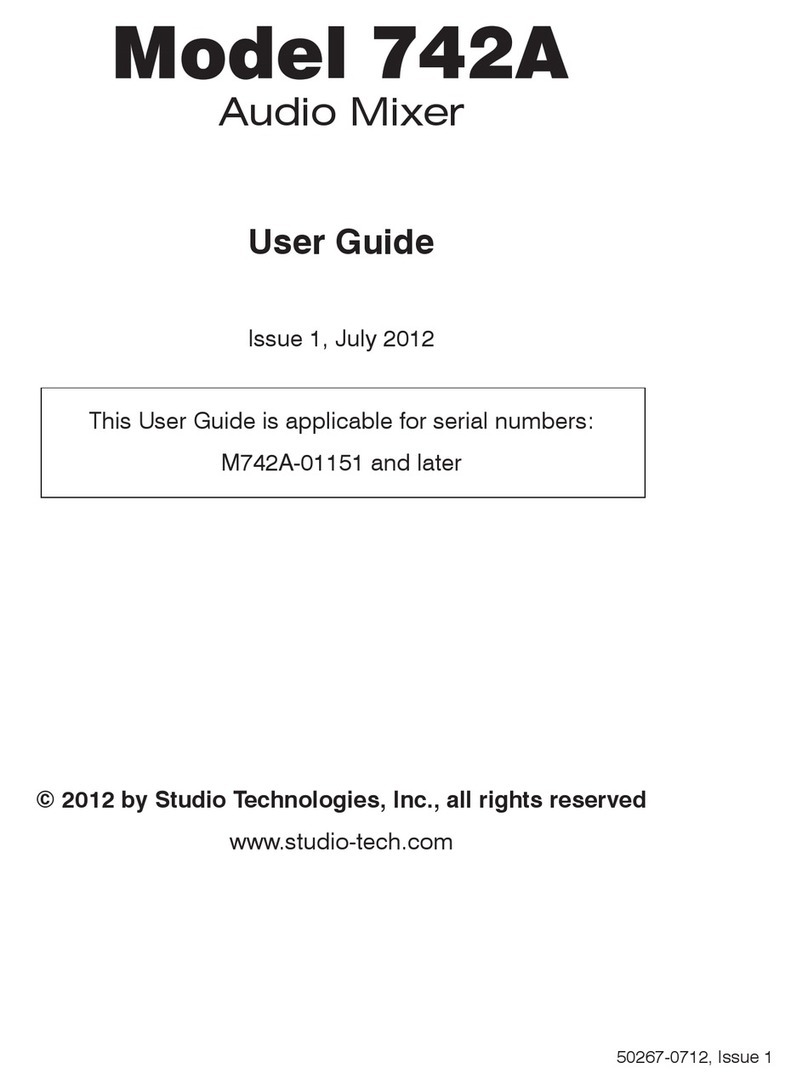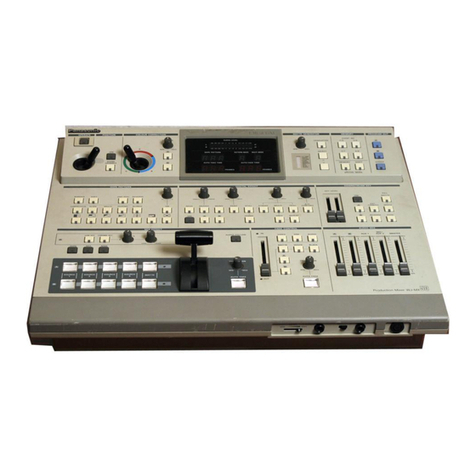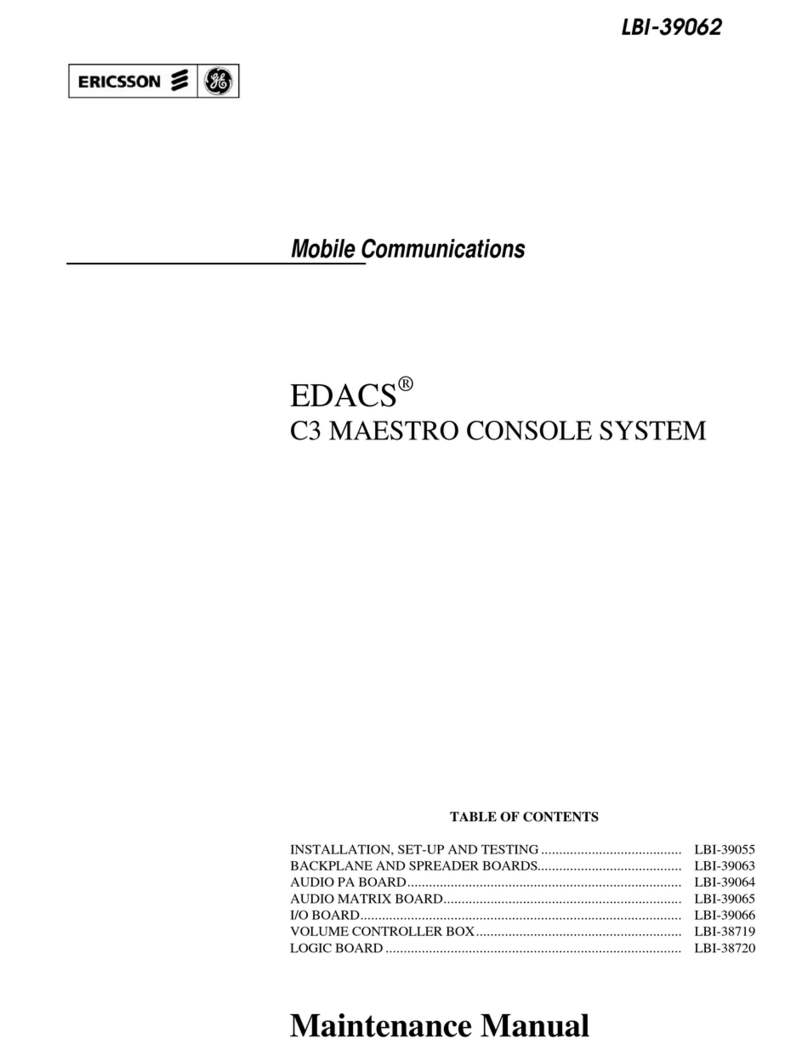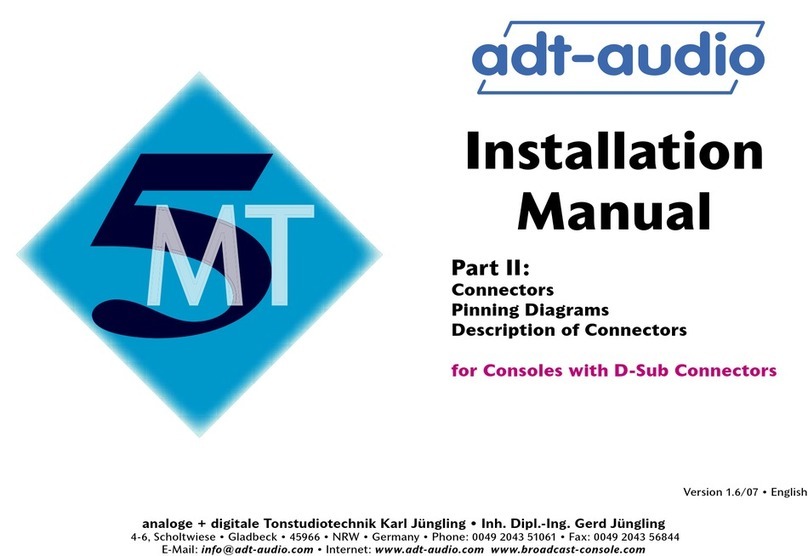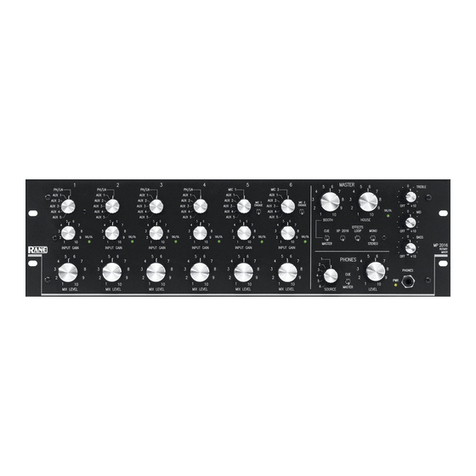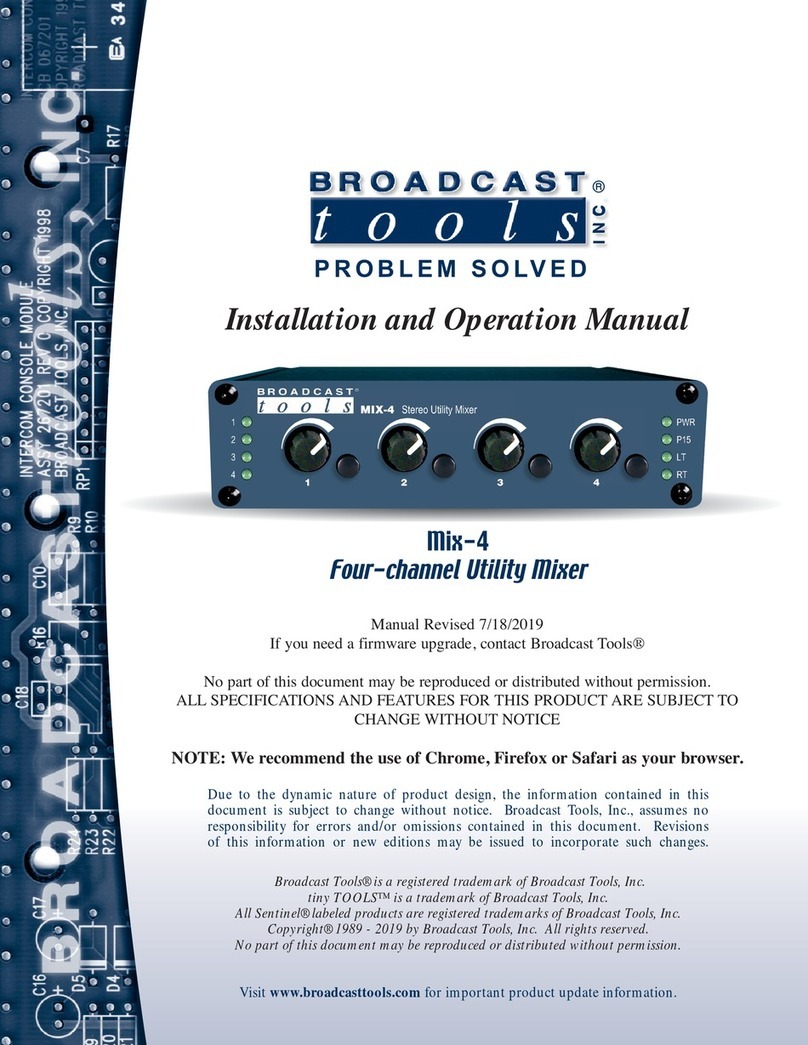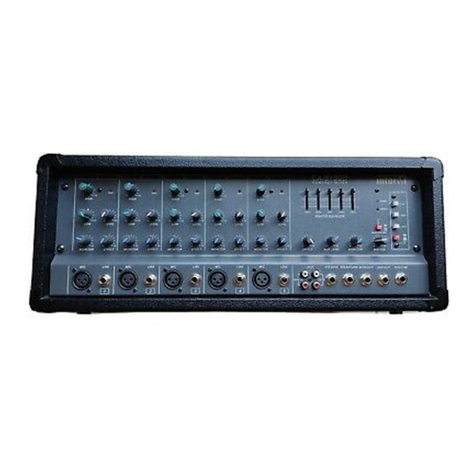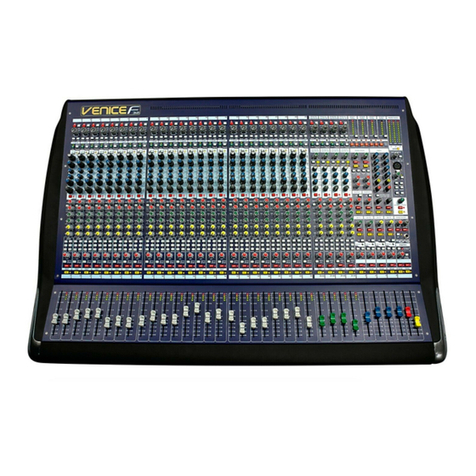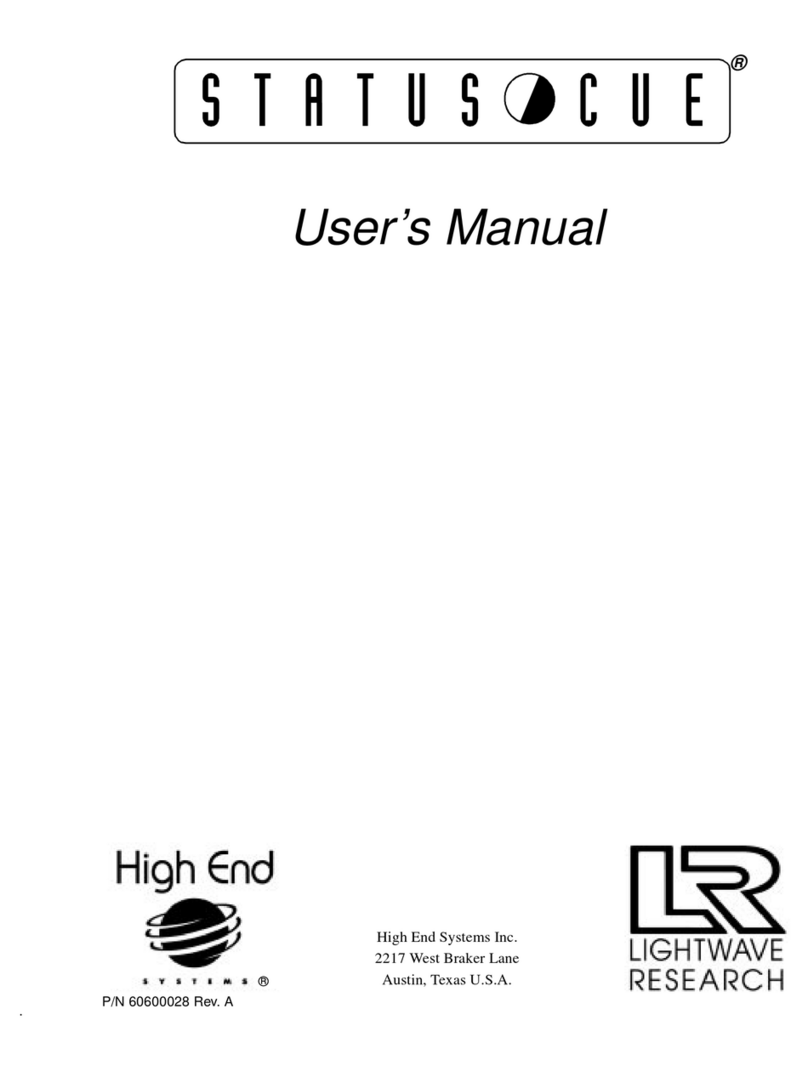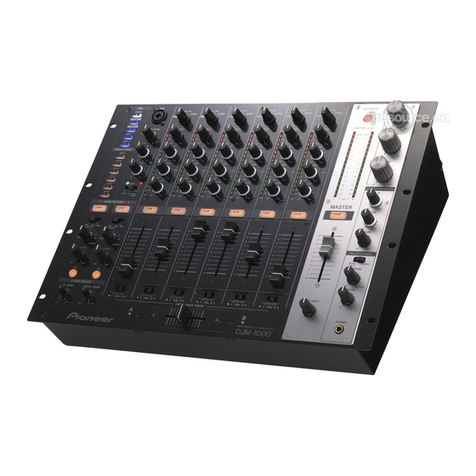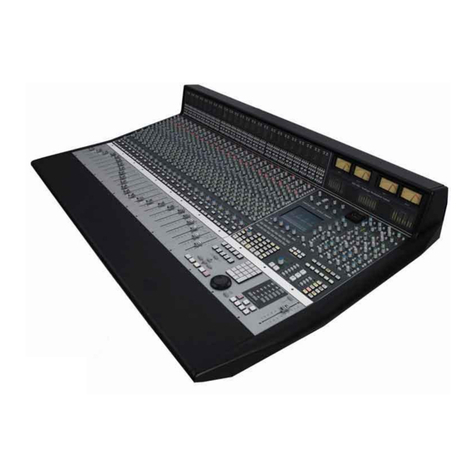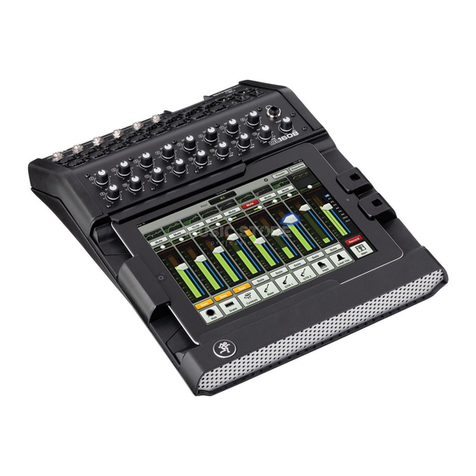
Issue 5, November 2017 Model 216 User Guide
Page 8 Studio Technologies, Inc.
these two signals are often referred to as
talent cue or IFB audio. In live television
applications they typically originate in
production trailers or control rooms and
provide one channel of program-with-
interrupt audio and a second channel
with program-only audio. The third and
fourth configuration modes allow all four
of the Dante-provided audio sources to
be utilized. These can be useful for more
complex or specialized situations.
The three headphone level controls (“rota-
ry pots”) are provided for setting the “mix”
of the selected audio input sources as well
as adjusting the overall headphone output
level. How these controls function depend
on the selected headphone output mode.
The first mode can be used to support
traditional on-air sports applications. In
this mode it would be typical to feed (con-
nect) program-with-interrupt audio to the
channel 1 audio input and program-only
audio to the channel 4 audio input. Rotary
control C1, located on the left side, is used
to adjust the level of the program-with-in-
terrupt audio signal that’s routed to the left
headphone output channel. Rotary control
C2, located in the center, is used to adjust
the level of the program-only audio sig-
nal that’s routed to the right headphone
output channel. For use with dual-channel
or stereo cue signals, another headphone
output mode provides a stereo (“level/bal-
ance”) mode. In this mode rotary control
C1 adjusts the level of both input channels
1 and 2, while rotary control C2 allows
adjustment of the left/right level balance.
In both of these modes rotary control C3,
located on the right, is used to adjust
the level of the sidetone audio signal that
is sent to both the left and right head-
phone output channels.
In the third headphone output mode rotary
control C1 adjusts the level of the channel
1 input audio source before it is routed to
both the left and right headphone output
channels. Rotary control C2 adjusts the
level of the channel 2 audio source before
it is routed to both the left and right head-
phone output channels. Rotary control
C3 adjusts the level of both the channel 3
and channel 4 audio inputs which are then
routed to, respectively, the left and right
headphone output channels.
The fourth headphone output mode is
similar to the third with the exception that
input 1 is routed only to the left head-
phone output channel while input 2 is
routed only to the right headphone output
channel. Inputs 3 and 4 will function in the
same way in both modes 3 and 4.
The sidetone function allows audio from
the Model 216’s microphone preamplifier
to be routed to the headphone output.
This can be useful, providing the user with
an aural confirmation of the signal con-
nected to the mic input. It is especially
important when a “mix-minus” talent cue
signal is provided for the user. For appli-
cation flexibility the sidetone function can
be configured from among four choices,
specifying when it will be active in rela-
tion to the status of the main and talkback
functions.
To help minimize the chance of broadcast
cues being missed, the action of the level
controls can be configured so that there’s
always a minimum headphone output
level. Alternately, the controls can be con-
figured to fully mute when they are at their
minimum (fully-counterclockwise) position.
When the level control on the right side is
used for sidetone it will always allow the
sidetone signal to be fully muted.




















